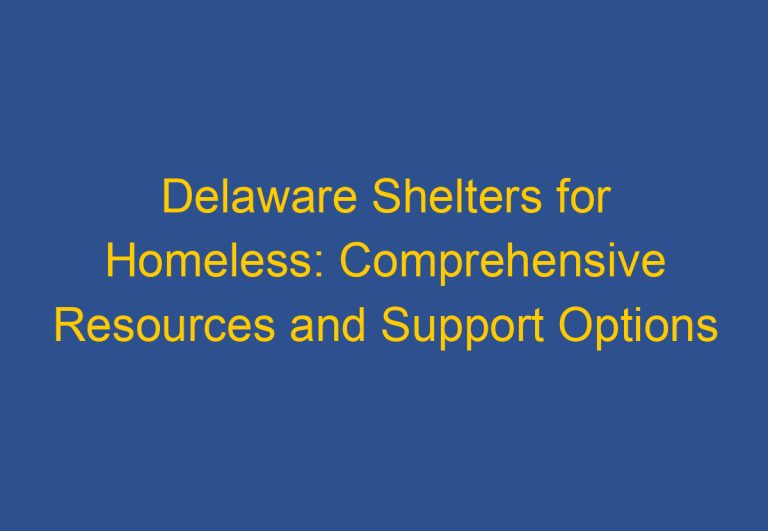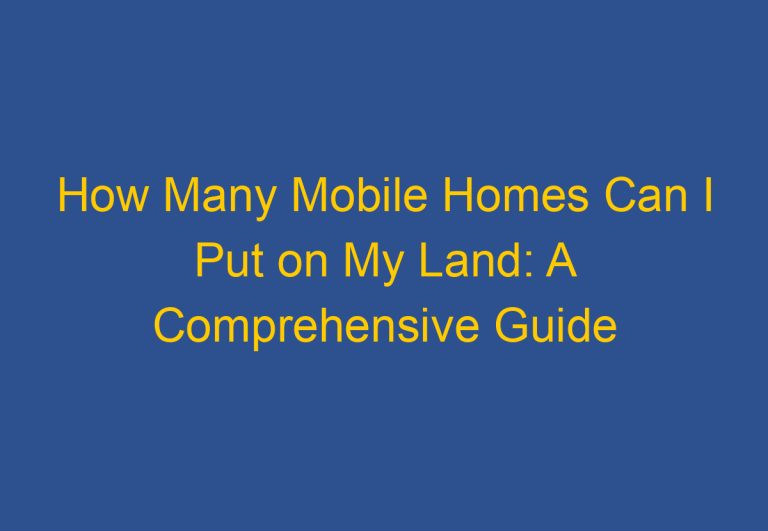Already Built Tiny Homes (Top Prefab Tiny Houses)
As the demand for sustainable and affordable living solutions grows, prefab tiny homes have emerged as a popular choice for individuals seeking to embrace the tiny living movement.
This guide will explore what tiny homes are, their benefits, and the different types of prefab options available.
Introduction to Tiny Homes
Tiny homes represent a significant shift away from traditional housing, emphasizing simplicity and efficiency.
Often measuring less than 400 square feet, a tiny home offers a functional living space that can be customized to meet individual needs.
The tiny house movement promotes a lifestyle that is not only affordable but also eco-friendly, allowing residents to downsize their possessions and reduce their environmental footprint while enjoying a cozy, well-built living environment.
What is a Tiny Home?
A tiny home is generally defined as a dwelling that is significantly smaller than traditional homes, often measuring less than 400 square feet. This minimalist lifestyle emphasizes efficient use of space, allowing for a more sustainable and affordable way of living.
The tiny house movement has gained traction in recent years, appealing to those looking to downsize, simplify their lives, or reduce their environmental impact.
Tiny homes can be built on foundations or on wheels, providing flexibility in terms of living arrangements and locations.
Benefits of Living in a Tiny Home
Living in a tiny home offers numerous benefits, including lower living costs, reduced utility bills, and a smaller environmental footprint. With less space to maintain, homeowners can spend less time cleaning and more time enjoying their surroundings
Additionally, tiny homes often promote a minimalist lifestyle, encouraging residents to declutter and prioritize what truly matters.
The mobility of many tiny homes allows for a flexible lifestyle, enabling individuals to travel or relocate easily without the hassle of traditional home ownership.
Exploring the Tiny Home Movement
The tiny home movement has emerged as a response to rising housing costs and a desire for simpler living. It advocates for sustainable practices, with many tiny homes designed to be eco-friendly, utilizing renewable resources and energy-efficient technologies.
This movement has sparked a community of like-minded individuals who share ideas, resources, and support for those interested in tiny living.
Tiny homes can also serve as vacation rentals or guest accommodations, further diversifying their appeal and utility.
Understanding Prefab Tiny Homes
Prefab tiny homes provide an innovative solution for those looking to delve into tiny living without the lengthy construction timelines associated with traditional building methods.
These homes are pre-manufactured, allowing for a more efficient and cost-effective approach to home building, while still providing high-quality craftsmanship and customizable living spaces.
What is a Prefab Tiny Home?
Prefab tiny homes are pre-manufactured structures that are built off-site and then transported to their final location. These homes are often constructed using modular components, allowing for quicker assembly and reduced labor costs.
Prefab homes can be customized to meet individual preferences and can include various amenities and designs.
This building method not only speeds up the construction process but also minimizes waste, making it an attractive option for environmentally conscious buyers.
Advantages of Choosing a Prefab Tiny Home
Choosing a prefab tiny home comes with several advantages, including cost savings, reduced construction time, and a lower environmental impact. Prefab homes can often be built more quickly than traditional homes due to their factory-based construction process. Additionally, many prefab manufacturers utilize sustainable materials and energy-efficient designs, making these homes eco-friendly choices. Buyers also benefit from the ability to customize their homes to suit their specific needs and preferences, ensuring a personal touch in their living space.
Types of Prefab Tiny Homes Available
Prefab tiny homes come in various styles and configurations, catering to different tastes and needs. Options range from modern designs with sleek lines and large windows to rustic cabins that blend into natural surroundings. Some popular models include the Rockwell, Cuddy Cabin, and Dakota, each offering unique layouts and features. Buyers can also find customizable options that allow for modifications in layout, materials, and finishes, making it easier to create a home that reflects their personal style.
Customization Options for Your Tiny Home
Customizing Your Tiny Living Space
Customization is a significant advantage of purchasing a tiny home. Homeowners can choose from a variety of options, including exterior colors, interior layouts, and finishes. Many manufacturers offer packages that allow buyers to select specific features such as cabinetry, flooring, and appliances. This level of personalization ensures that each tiny home can be tailored to fit the homeowner’s lifestyle and preferences, creating a unique living environment that meets their needs.
Eco-Friendly Features in Custom Tiny Homes
Many tiny homes are designed with sustainability in mind, incorporating eco-friendly features such as solar panels, rainwater harvesting systems, and energy-efficient appliances. Builders often use recycled or sustainably sourced materials, contributing to a reduced carbon footprint. Homeowners can also choose to install composting toilets and greywater systems, further enhancing the environmental benefits of tiny living. These features not only promote a greener lifestyle but can also lead to significant cost savings on utilities.
Luxury Custom Tiny Home Options
For those seeking a more upscale experience, luxury custom tiny homes are available that include high-end finishes and amenities. These homes may feature gourmet kitchens, spa-like bathrooms, and advanced smart home technology. Custom luxury options allow homeowners to enjoy the benefits of tiny living without sacrificing comfort or style. Builders often work closely with clients to create bespoke designs that reflect their tastes while maximizing the functionality of the smaller space.
Exploring Modular Tiny Homes
What are Modular Tiny Homes?
Modular tiny homes are similar to prefab homes but are built in sections or modules that are then assembled on-site. This construction method allows for greater flexibility in design and layout, as multiple modules can be combined to create larger living spaces. Modular homes can be customized to include various features and finishes, making them suitable for a wide range of preferences. This approach also facilitates quicker construction times while maintaining high quality and durability.
Benefits of Modular Tiny Houses
The benefits of modular tiny houses include reduced construction time, cost efficiency, and the ability to customize the design. Since the modules are built in a controlled environment, the risk of weather-related delays is minimized. This method also allows for precise quality control during the construction process. Additionally, modular homes can be designed to meet specific zoning regulations and building codes, ensuring compliance and safety. Homeowners can enjoy a unique living space tailored to their needs without the lengthy timeline of traditional home building.
Popular Modular Tiny Home Models
Several popular modular tiny home models are available, each offering distinct features and layouts. Models like the Overland Park and Dakota provide spacious interiors with modern amenities while maintaining a compact footprint. Buyers can choose from various sizes and configurations, allowing for flexibility in design. Many modular homes also incorporate energy-efficient systems and sustainable materials, aligning with the growing demand for eco-friendly living solutions.
Buying Prefab Tiny Homes for Sale
Where to Find Affordable Prefab Tiny Homes
Finding affordable prefab tiny homes for sale has become easier due to the rise of various manufacturers and online marketplaces. Companies like Lifespark Homes and Tumbleweed showcase a range of models designed to cater to budget-conscious buyers. Websites such as Tiny House Listings are excellent platforms for individuals seeking to buy or rent tiny homes, allowing them to filter options based on their specific needs. Furthermore, local builders can provide personalized solutions tailored to individual preferences, ensuring that potential homeowners find a home that meets their requirements and budget.
Factors to Consider When Purchasing a Prefab Tiny Home
When considering the purchase of a prefab tiny home, several critical factors come into play. The overall cost, which encompasses delivery fees and potential customization options, is paramount. Additionally, assessing the quality of materials used in construction is vital to ensure durability. Prospective buyers should carefully evaluate the home’s energy efficiency and sustainability features, as these elements can significantly impact long-term living costs. Researching the manufacturer’s reputation and examining customer reviews will also aid in making informed decisions. Lastly, understanding zoning regulations and site preparation is crucial to avoid any legal complications.
Financing Options for Tiny Home Buyers
Financing a tiny home can mirror traditional home loans, presenting a range of options for buyers. Many tiny home manufacturers provide financing plans, including personal loans and specialized tiny home loans tailored for those interested in built tiny homes. Similar to conventional mortgages, buyers may need to offer a down payment and proof of income. Encouragingly, some financial institutions are starting to recognize tiny homes as legitimate housing options, leading to the development of tailored financing solutions. Therefore, exploring various financing avenues is essential for buyers to secure the best rates and terms available.
Living the Tiny Lifestyle
Enjoying the Freedom of Tiny Living
Embracing the tiny lifestyle fosters a unique sense of freedom and flexibility that many find appealing. With fewer possessions and a compact living space, homeowners can shift their focus from material goods to enriching experiences. This lifestyle encourages outdoor activities, travel, and spending quality time with friends and family. The mobility of many tiny homes allows individuals to easily relocate, opening up opportunities to explore diverse environments and communities. Embracing tiny living can lead to a more intentional and fulfilling way of life, aligning with values of minimalism and sustainability.
Creating a Spacious Living Environment in a Tiny Home
Despite their small footprint, tiny homes can be designed to feel spacious and inviting through thoughtful planning. Utilizing natural light, open floor plans, and multifunctional furniture can create an airy atmosphere that transcends the limitations of size. Incorporating vertical storage solutions and clever design elements helps maximize space and minimize clutter, allowing homeowners to enjoy a comfortable living environment. Additionally, extending outdoor areas into patios or gardens further enhances the space available, creating a seamless connection between indoor and outdoor living. With intentional design, tiny homes can deliver both comfort and functionality without sacrificing style.
Incorporating Eco-Friendly Practices into Tiny Living
Tiny living inherently supports eco-friendly practices, as smaller spaces require fewer resources to sustain. Homeowners can amplify their sustainability efforts by installing solar panels, rainwater collection systems, and energy-efficient appliances. Options like composting toilets and greywater recycling systems are increasingly popular among tiny home residents seeking to minimize waste. Selecting sustainable materials for furnishings and decor further contributes to a reduced carbon footprint. By embracing these eco-friendly practices, tiny homeowners can cultivate a harmonious lifestyle that prioritizes both comfort and environmental stewardship.
Conclusion: Embracing the Tiny Home Lifestyle
Final Thoughts on Built Tiny Homes
The tiny home lifestyle signifies a broader movement toward simplicity, sustainability, and intentional living. With the growing number of prefab and modular options available, more individuals are uncovering the numerous benefits of downsizing. Tiny homes serve as a viable solution to escalating housing costs and environmental challenges, enabling homeowners to enjoy a comfortable lifestyle without excessive consumption. Adopting this lifestyle can foster greater financial freedom and a more profound connection with one’s surroundings, leading to a more fulfilling way of life.
Future Trends in Tiny Home Living
The future of tiny home living appears promising, with trends pointing towards increased popularity. As urban areas become denser and housing prices rise, an increasing number of people are seeking affordable alternatives. Emerging innovations in design and construction techniques are likely to yield even more efficient and sustainable tiny homes. Additionally, the integration of smart home technology will enhance the functionality of these compact living spaces. There may also be a rise in communities centered around tiny homes, fostering connections among individuals seeking a simpler, more communal lifestyle.
Your Next Steps Towards Tiny Living
If you’re contemplating a transition to tiny living, it’s essential to start by researching available options and establishing your budget. Attending tiny home shows or visiting manufacturers can provide valuable insights into models and inspire your design choices. Consider your lifestyle needs and how a tiny home can accommodate them effectively. Engaging with online tiny home communities can offer support and advice as you embark on your journey. With careful planning and thoughtful choices, you can successfully navigate the shift to a fulfilling tiny home lifestyle.






